
Updated – November 6th, 2018
It is critical to the success of your organization to make sure your content is up to date and follows the latest user experience practices and methods. Meghan Casey’s book, “The Content Strategy Toolkit” covers the step by step approaches and methodologies to achieve successful content strategy. Casey covers the planning process of managing content throughout its lifecycle, aligning content to business goals, analysis, modeling, development, production, presentation, evaluation, measurement, sunsetting of content and governance. She explains that content strategy is not the ‘implementation side’ (the actual content development, management, and delivery) they are the tactical outcomes of the strategy that need to be carried out for the strategy to be effective.[1]
Before jumping into a project it is first important to uncover the problems before you can begin to fix them. Meghan Casey discusses the importance of translating your problems to business opportunities in Chapter One. With problems come a decrease in productivity and profit she explains.
Creating a budget, buy-in and preparing for success before starting a project is extremely important.
Here are a three reasons you may want to create a content strategy.
Reasons:
- Redesign
- Migration CMS or Domain
- Comparable for other devices
- Overall content needs improvements
Next you will want to create a hypothesis as Meghan Casey puts it as a ‘scientist’. Hypothesis are important, because it will teach you what you want to learn about your content. Once you settle on a hypothesis you can then chose a method. Your method will ultimately prove or disproves your hypothesis.
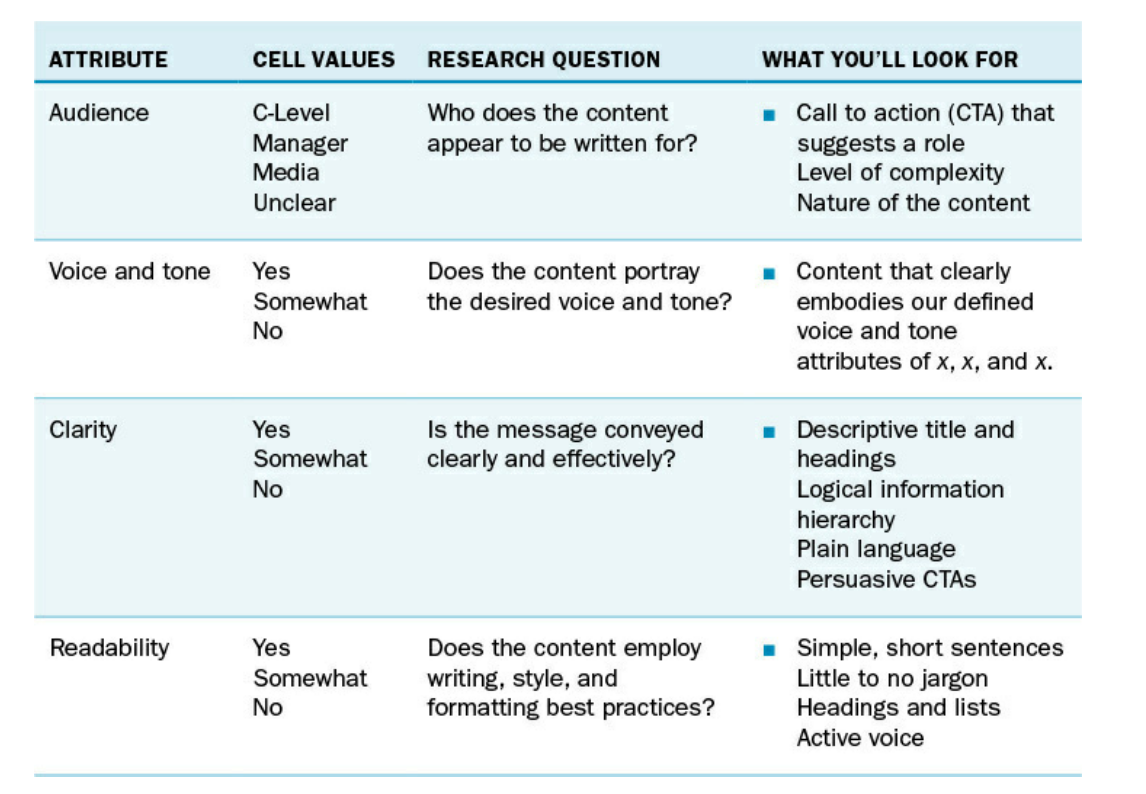
[1, (Introduction) Pg. 412] This chart provides an example of an audit criteria matrix.
Content Audit – (hire content strategist) look for things you can evaluate objectively: what the content is for intended purpose for content / helps explain to client objectives of content strategy / Audit criteria matrix
Analytics Review – Page views, traffic user paths through content
User Testing – Actual users (Subjectivity to your assessment)
Now once you picked your method you can be specific about what to measure and how to do the measuring. For each method you will want to prove or disprove your hypothesis / gather findings. (May be able to reuse for scorecard)
Analytics – Decide what questions you want to answer first before jumping in to data. Create column in audit matrix for what pages were viewed most / Google Analytics
User Testing – Specify what you want to learn and how you will want to get the answers. How does the user feel? / What words would the user use to describe your organization after reading your content. / How well do they comprehend your material? / Can the user find key material?

Image of Meghan Casey’s book. [2]
Now you can answer these questions:
- Who is involved?
- How much time do these people contribute?
- How long does it take to publish new content?
- How much content do you publish daily weekly monthly?
- How so you decide what content of publish?
- What are the pain points related to your content?
During this process you will want to document he people and processes for now. By turning the problems your users are experiencing into opportunities after answering these questions will drive you in the right direction.
Meghan Casey uses a number of charts to represent her processes. During this step she recommends summarizing the problems and opportunities you discover in a chart. When it is time to write your opportunity statement it is crucial you make sure it include desired and result. (Ex – boss wants more conversions) Once you have turned problems into opportunities now you will need to convince people in charge that your organization needs content strategy.
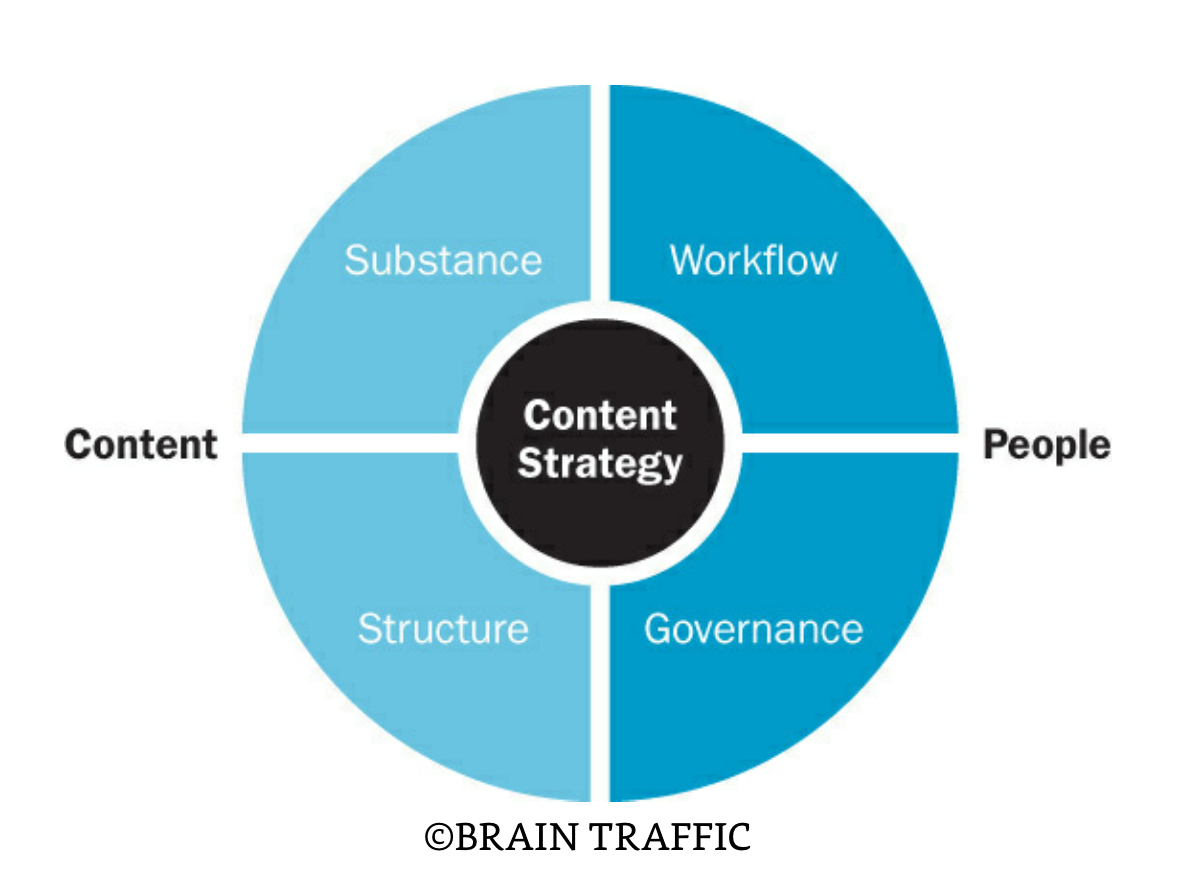
[1, Pg. 10] You will want to think about the people, their jobs and their behavior during your project.
Your case for content strategy must be based on risk and reward, just like a business person would promote.
Answer these questions:
- Increase efficiency?
- Decrease costs?
- Boost revenue?
Next you will want to provide an example to quantify missed opportunities.
Business case example:
If today we do XXXXX we will make $XXXXX, because we did XXXX.
Next estimate what it will cost to fix the problem,
*Wow!* We will make $XXXXX in XX days/months/years by doing XXXXX.
By calculating the risks with math you can show how much your companies profit will increase over time due to your project. Meghan Casey says this is the most important factor when asking for resources and budget. Since cost relates to your organizations change, you will want to think about the people, their jobs and their behavior.
Business goals = Reaching = Efficiency
Meghan Casey tells us to be up front about necessary changes to our teams behavior when in discussion. She shares with us Toulmin’s argument model to explain how we might want to consider constructing your argument.
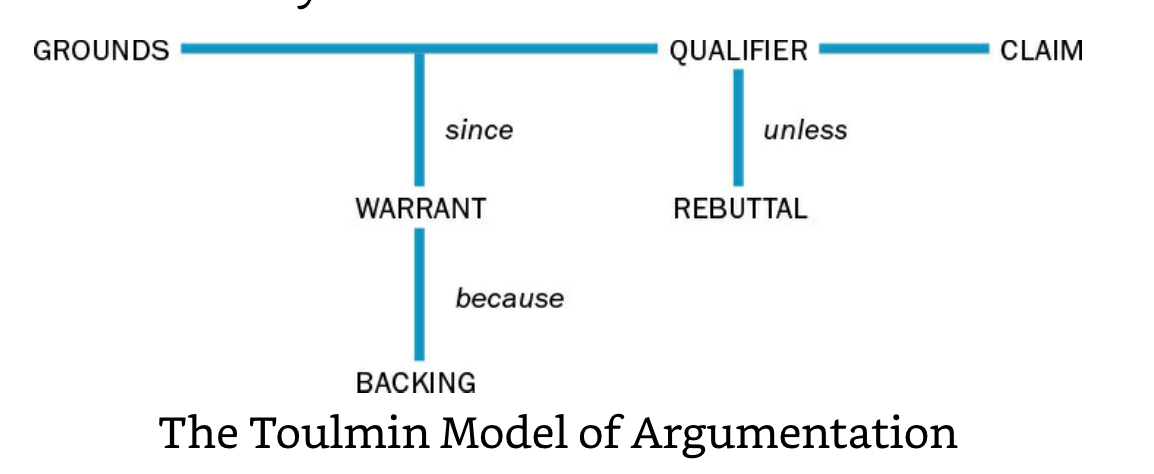
[1, Pg. 20] Toulmin’s Argument Model
Claim – Statement you are asking someone to accept
Grounds – Data and facts that support the claim
Warrant – The main reason why the data is relevant to the claim
Backing – Information that supports the warrant is based on analysis of employees
Qualifier – Suggest the likely hood that the data supports the warrant by referencing experts
Rebuttal – Likely challenge to the claim will be about budget. Layout budget and risks.
The ask – The specifics
At the end of chapters we were assigned this module we learn the importance of getting the right SH involved with our project. We must align them on what the project should achieve.
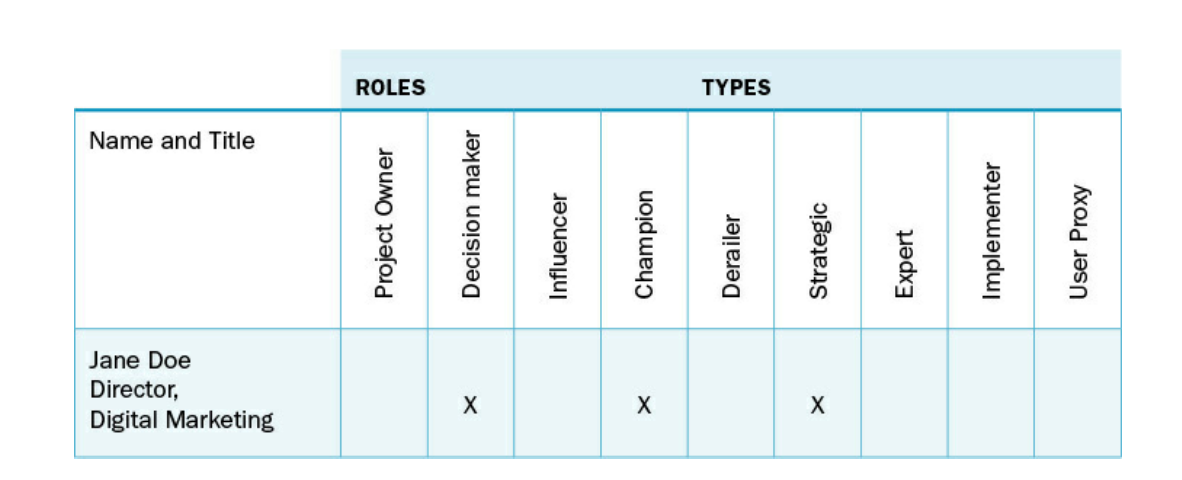
[1, Pg. 30] Stakeholder Matrix Example
- Project Owner
- Decision makers
- Champions
- Influencers
- Derailers
Types:
- Strategic
- Expert
- Implementer
- User Proxy – experience related to your targeted audiences
Now you can make a list of departments to fill in the roles and types. (Ex: Marketing)
After you Develop your team’s architecture you can begin to craft your approach with them. Meghan Casey recommends conducting interviews and workshops (Strategic, Content Ecosystems analysis – understanding of things, tactical).
Chapter 4 discussed the importance of aligning on your projects objectives. Setting the table up is key for preparation. Getting the the right people involved and organizing your interview or workshop will allow you to align your projects to their objectives.
Use techniques to curve discussion:
- Paraphrasing
- Drawing people out
- Conversation tracking
- Silence
- Understanding consensus
After, planning, preparing and executing your objectives Chapter five concludes the importance of checking in with your team and scheduling weekly team meetings. This will keep everyone on the same page and improve the content associated with your organization.
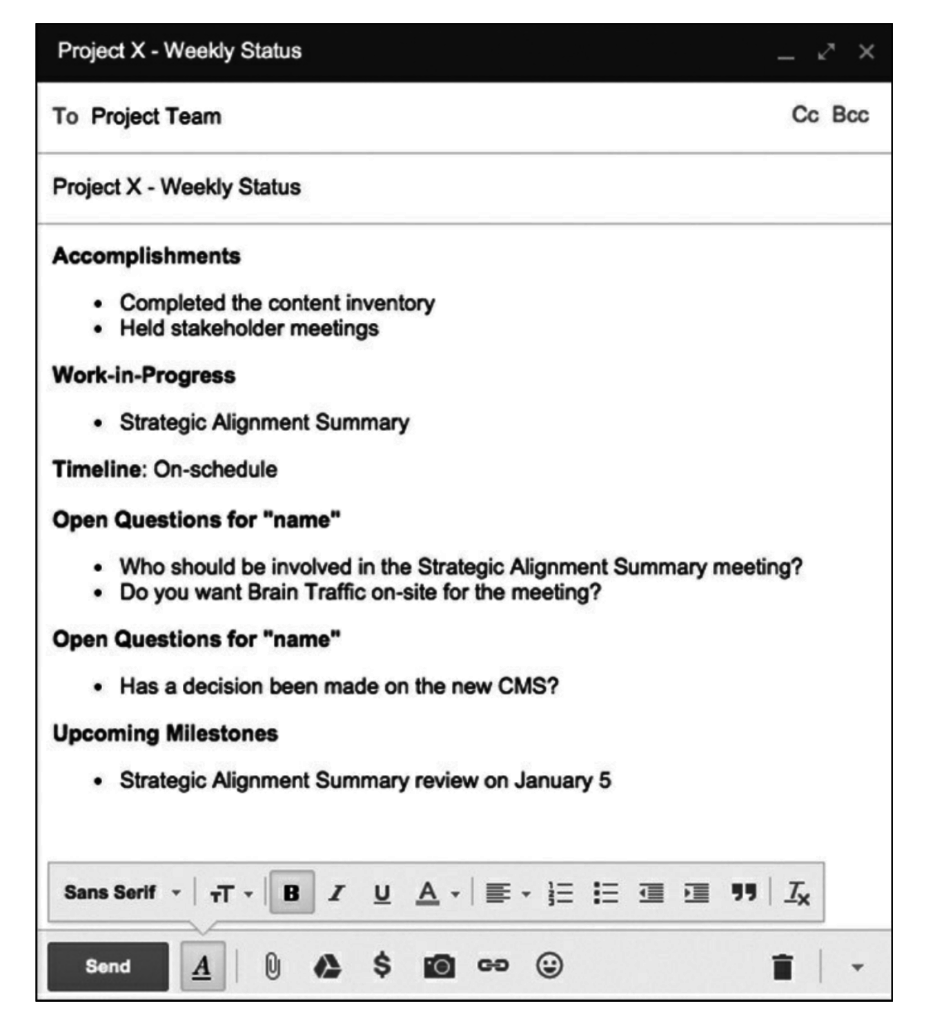
[1, Pg. 59] Email example to discuss next key milestone.
Sources:
[1] https://www.amazon.com/Content-Strategy-Toolkit-Guidelines-Templates/dp/0134105109 Meghan Casey’s book, “Content Strategy Toolkit”
[2] https://trackmaven.com/blog/history-of-content-marketing/
[4] https://www.contentstrategy.com/the-content-strategy-toolkit
[5] https://www.nngroup.com/articles/content-strategy-long-vs-short/?lm=content-strategy&pt=course
Images – https://www.amazon.com/Content-Strategy-Toolkit-Guidelines-Templates/dp/0134105109, https://static1.squarespace.com/static/55687b77e4b03346fd69979b/t/5674142aa976af1587b1ae28/1450447924064/?format=1500w, https://www.google.com/imgres?imgurl, https://wwwgoogletrends.com
